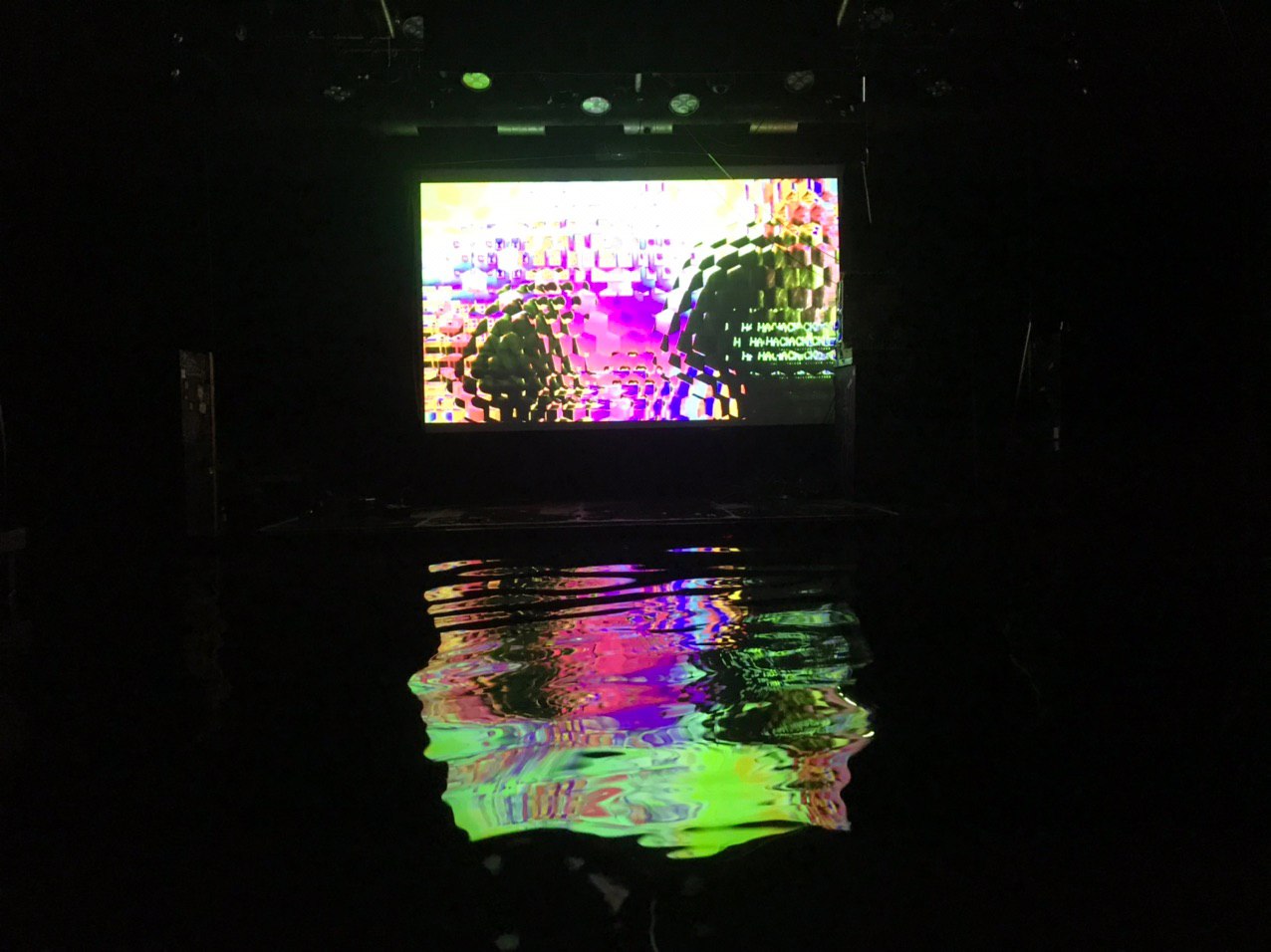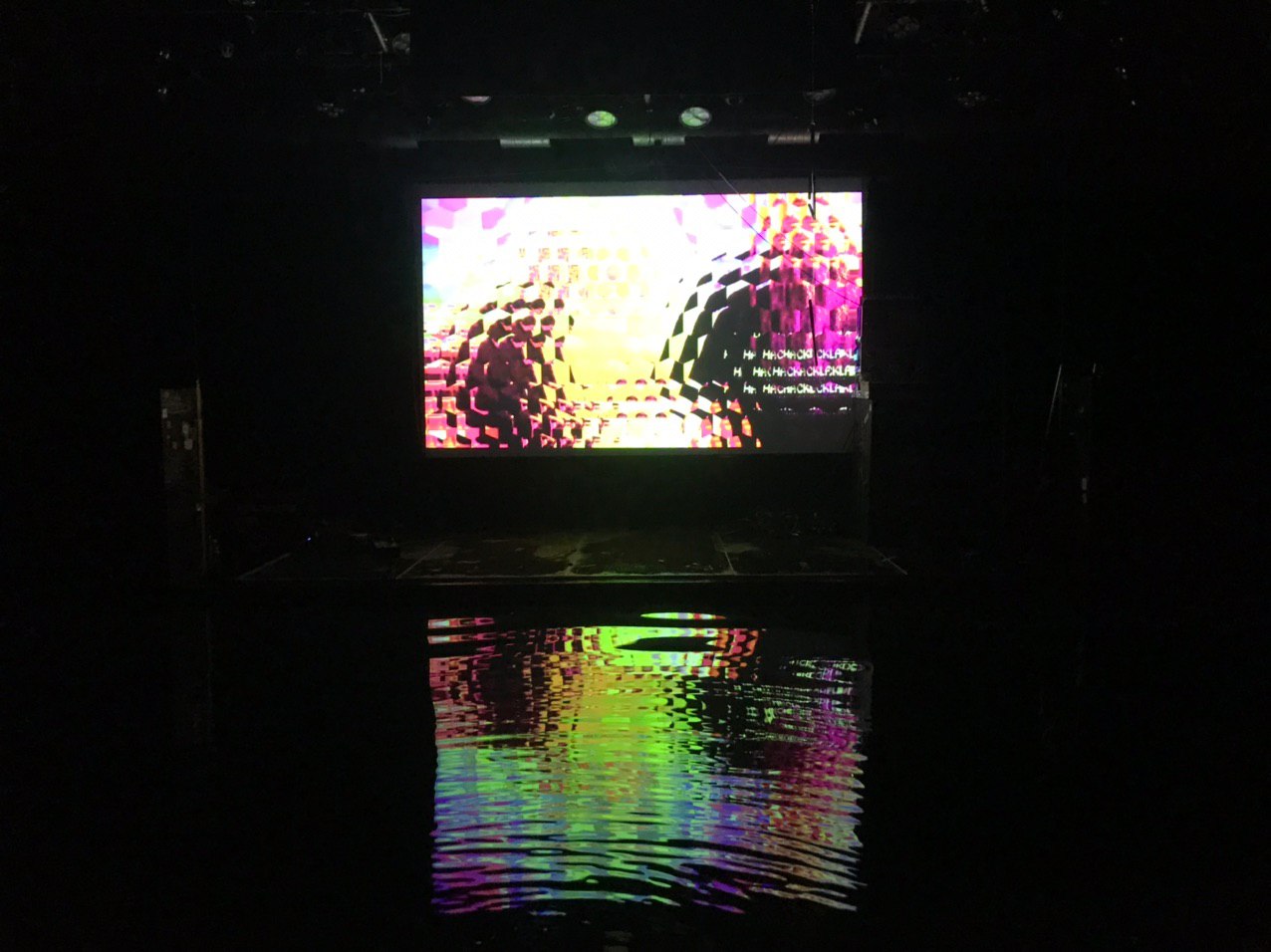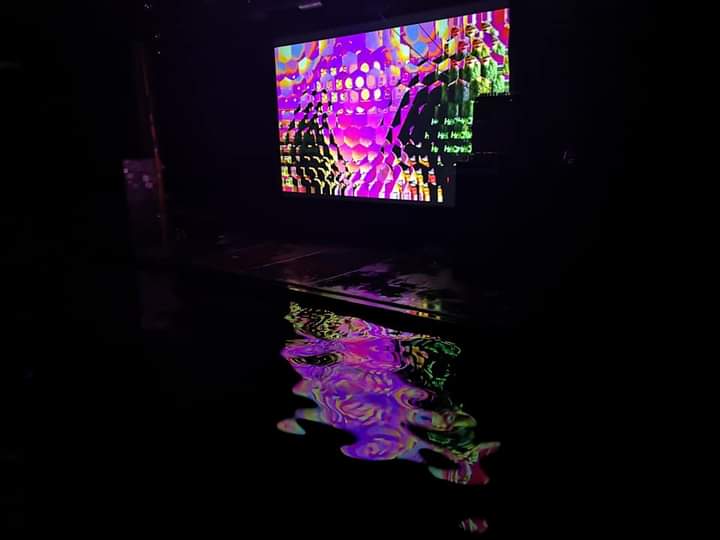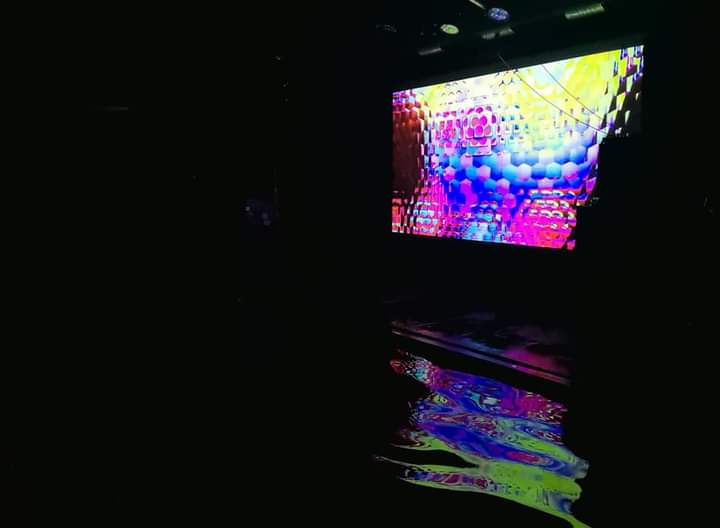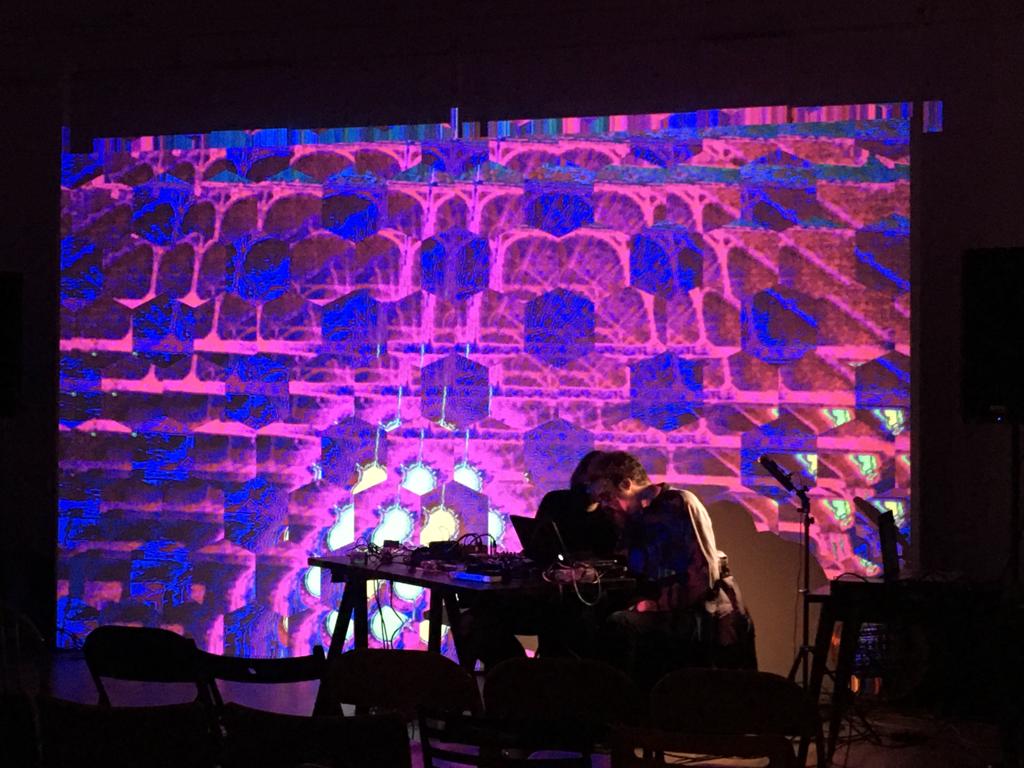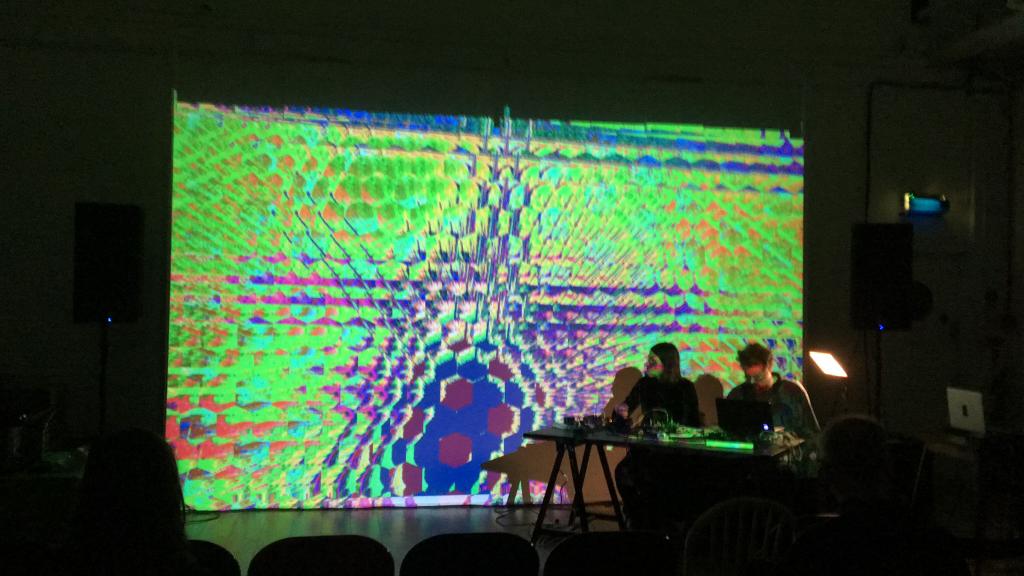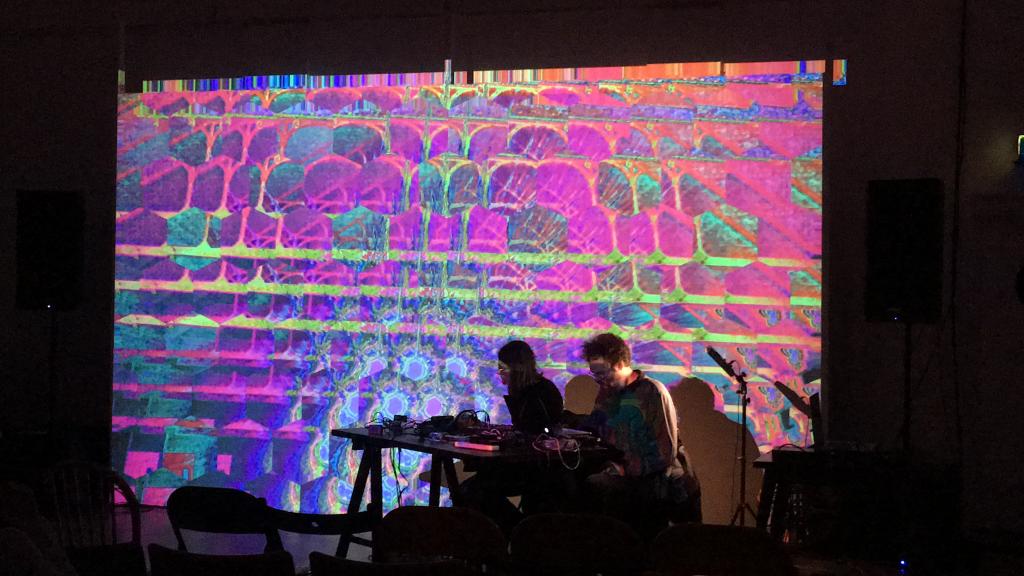ommatidia
live audiovisual
by mathr & netz
Ommatidia live av fly vision algorithm
The fly vision algorithm is based obviously on the eyes of flies, “A compound eye is a visual organ found in arthropods such as insects and crustaceans. It may consist of thousands of ommatidia, which are tiny independent photoreception units that consist of the cornea, lens, and photoreceptor cells which distinguish brightness and color. The image perceived by the arthropod is a combination of inputs from the numerous ommatidia, which are oriented to point in slightly different directions. Compared with single-aperture eyes, compound eyes have poor image resolution; however, they possess a very large view angle and the ability to detect fast movement”.
Ommatidia how it works
The visualization code takes an image from a single lens webcam, and processes it to emulate the ommatidia. Arranged in a hexagonal grid, which is an optimal packing reached by evolution, each cell has a wide angle, with overlapping edges repeating parts of the image and enhancing the drama of moving objects. The colour of the cells are modified according to the volume levels of three frequency bands of audio (bass, mids, treble). Over time the size of the cells are modulated, zooming disconcertingly.
Artists:
mathr
Claude Heiland-Allen
Artist from London interested in the complex emergent behaviour of simple systems, unusual geometries, and mathematical aesthetics. From 2005 through 2011 Claude was a member of the GOTO10 collective, whose mission was to promote Free/LibreOpen Source Software in Art. GOTO10 projects included the make art festival (Poitiers, France), the PuredyneGNU/Linux distribution, and the GOSUB10 netlabel. As part of GOTO10 Claude developed the backend for the make art and GOSUB10 websites, packaged software for Puredyne, and assisted workshops. He released two EPs on the GOSUB10 netlabel. As a software developer, Claude has developed several programs and libraries used by the wider free software community, including pdlua(extending the Puredatamultimedia environment with the Luaprogramming language), buildtorrent(a program to create .torrent files), and hp2pretty (a program to graph Haskell heap profiling output).
https://mathr.co.uk/
claude@mathr.co.uk
netz
Laura Netz
Curator, artist and researcher established in London since 2009. Has collaborated with various institutions such as FonotecaNacional de Mexico, Museum of Contemporary Art Barcelona, Museum of Transitory Art, or International Symposium on Electronic Arts. In 2015, she launched her independent record label EAM Elektronische-art-and-music. Laura Netzis an active participant in the hacker community. Although the artists creates her own DIY oscillators prototypes based on Hardware Hacking by Nick Collins, and also develops workshops on DIY circuitry for beginners, during Medial Dark Ages performance the artist is using prototypes from: MutanMonkey Analog Instruments, DIY opto-oscillators; Martin Howse, Detektors; and CyrilleHenry, Noizoid, MMO-3.
http://netzzz.net/ommatidia/
laura@netzzz.net
Tech rider
Provided by artist:
-Laptop
-USB soundcard
-USB webcam
-Mixer Behringuer8 channels.
-Handmade Synth MMO-3.
-DIY circuitry.
-Cables, laptop power supply.
Provided by venue:
-Power socket
-HDMI connection to projector
-Projector HDMI 5000 lumens
-Complete PA sound system 2.1
Concerts
2020 STWST48x6 MORE LESS in Kooperation mit ARS ELECTRONICA Kuratoren: Shu Lea Cheang, Tanja Brandmayr, Franz Xaver, Linz, Austria, online. https://stwst48x6.stwst.at/
2019 Tatsuru Arai / Bioni Samp / mathr&netz,IKLECTIK,London.
